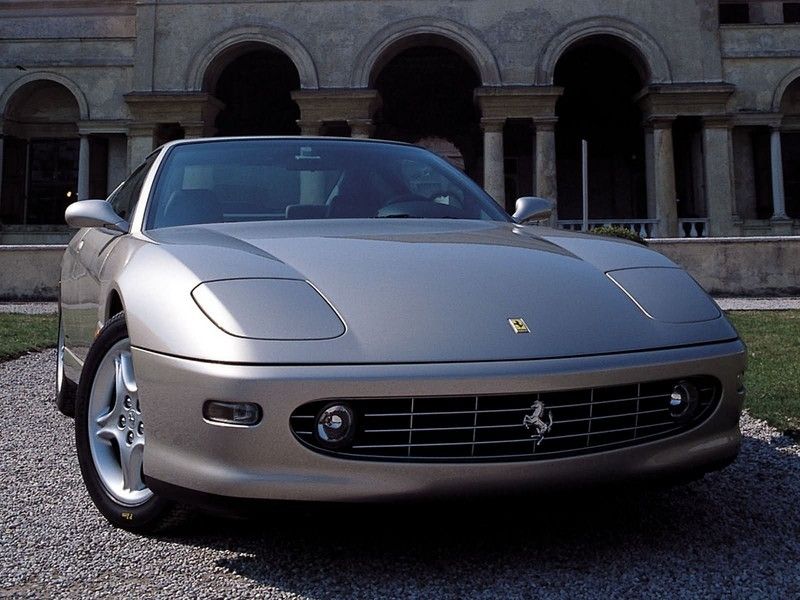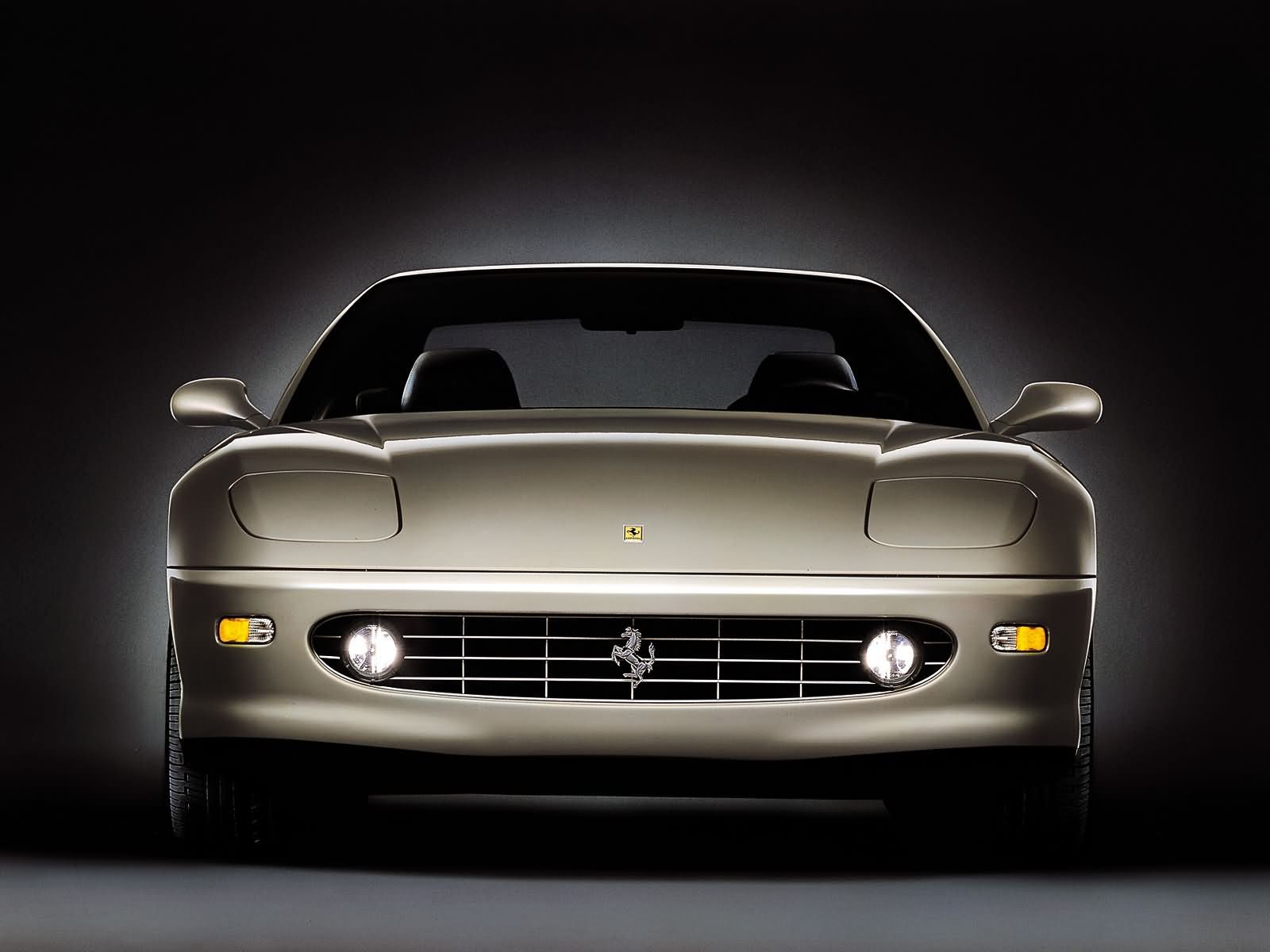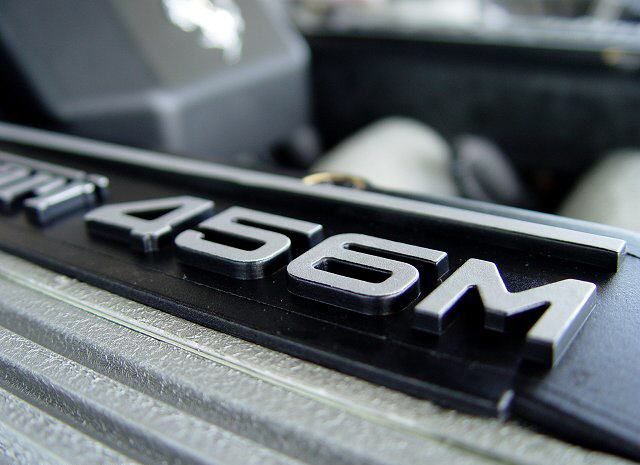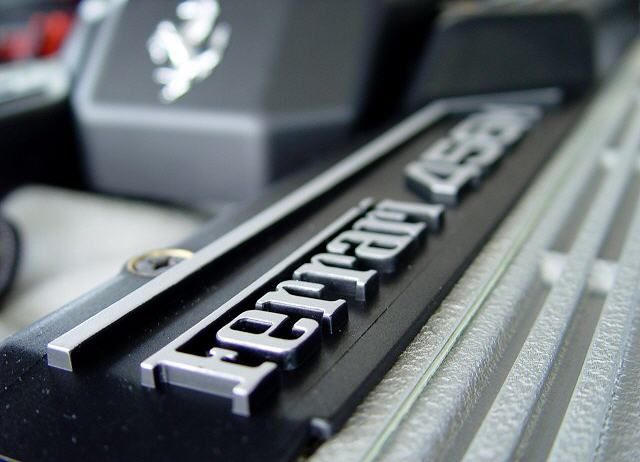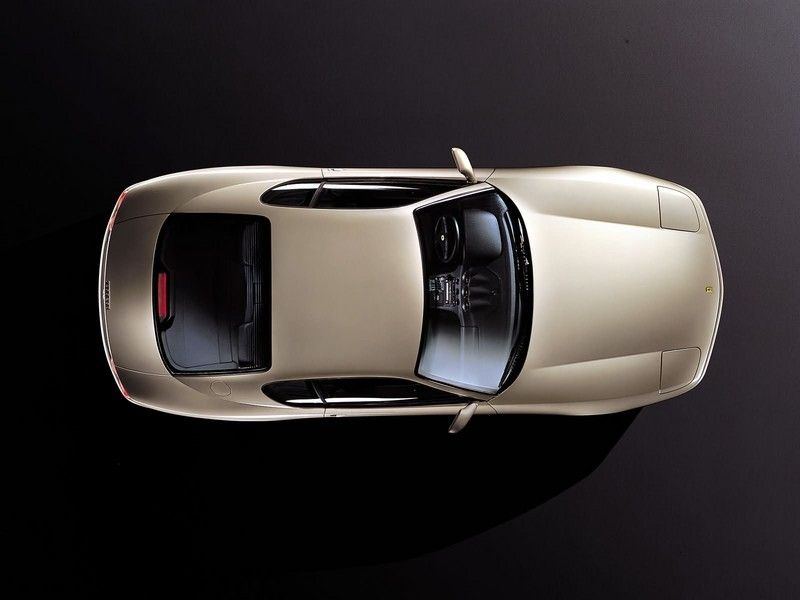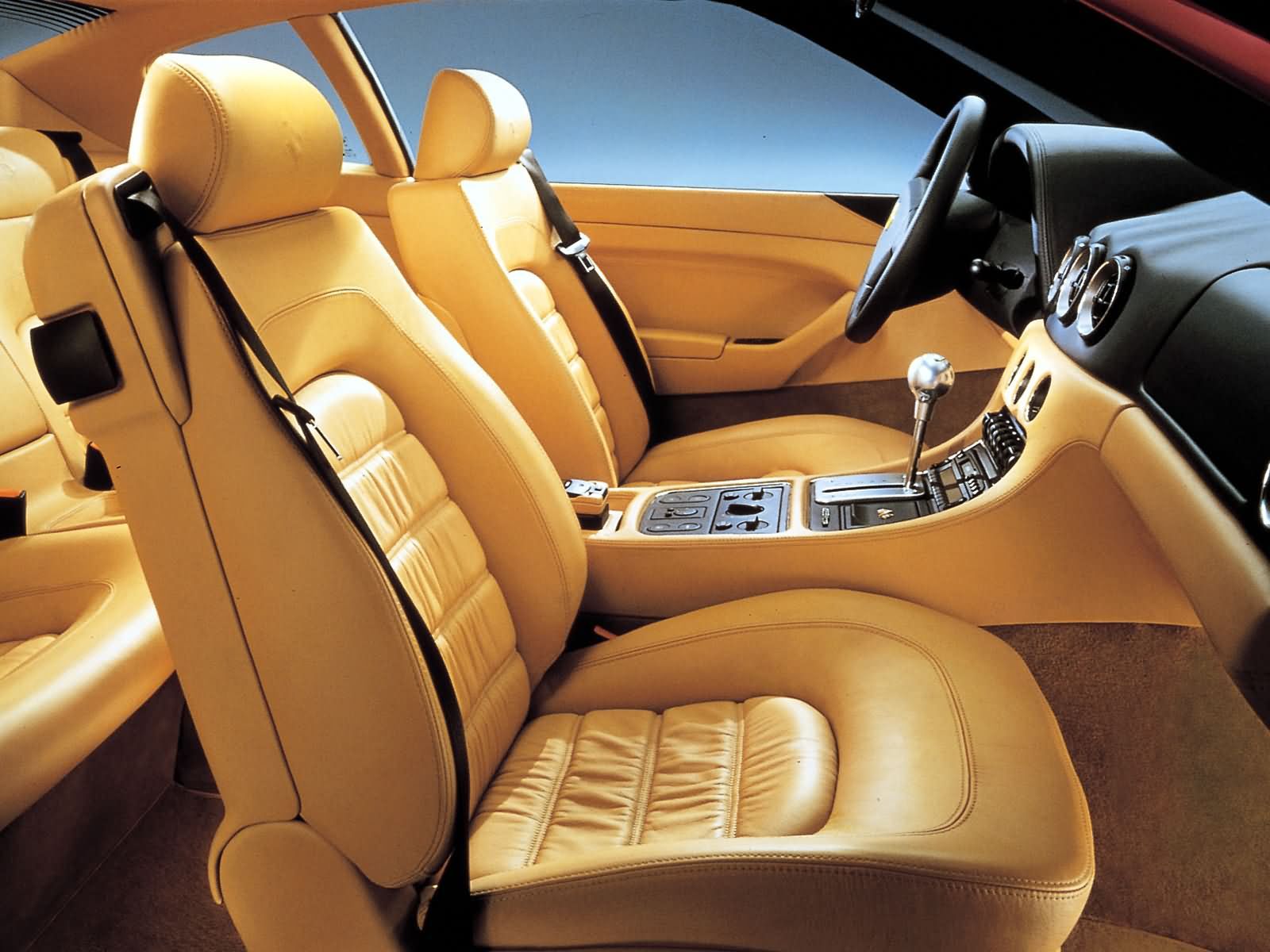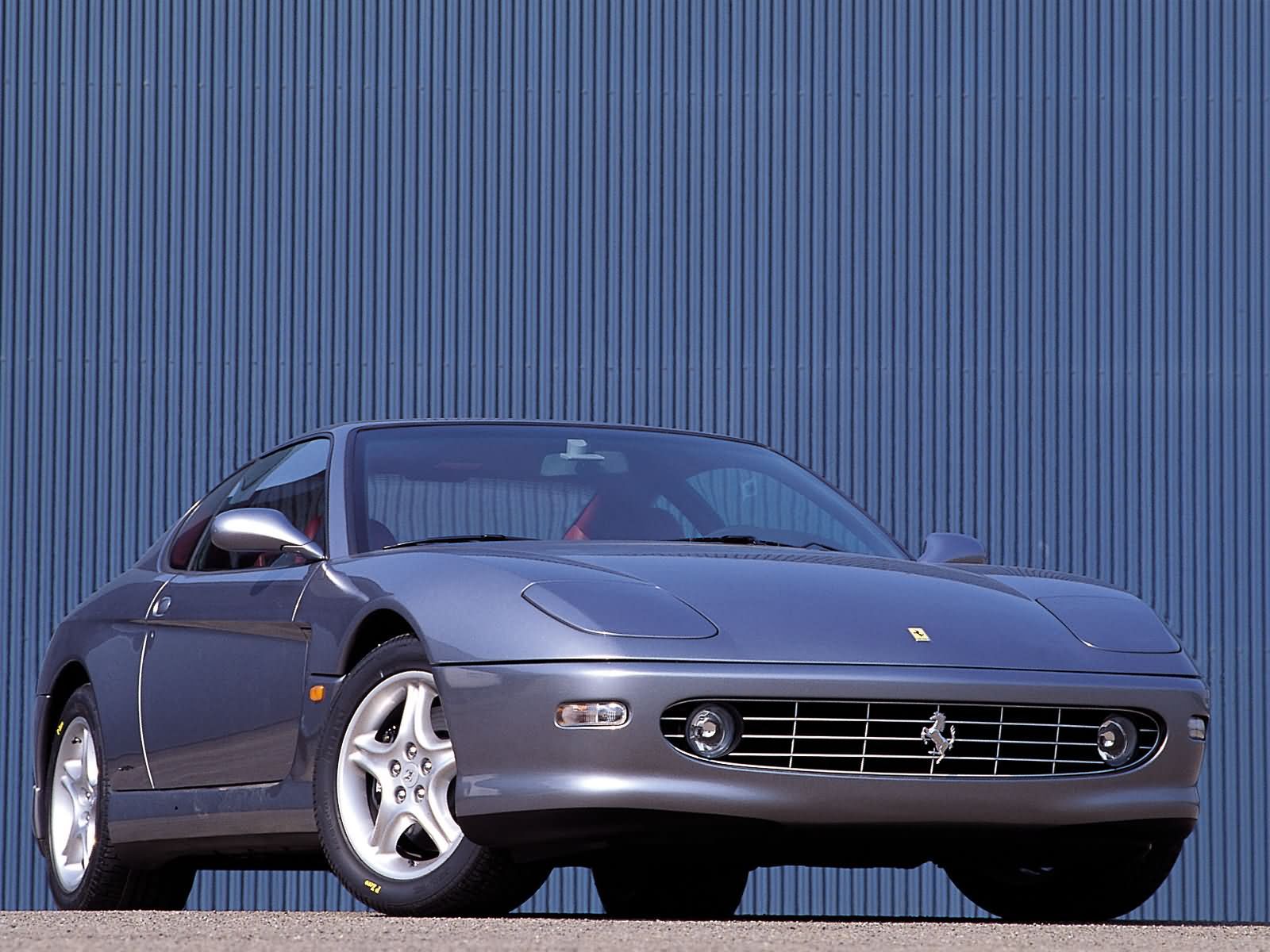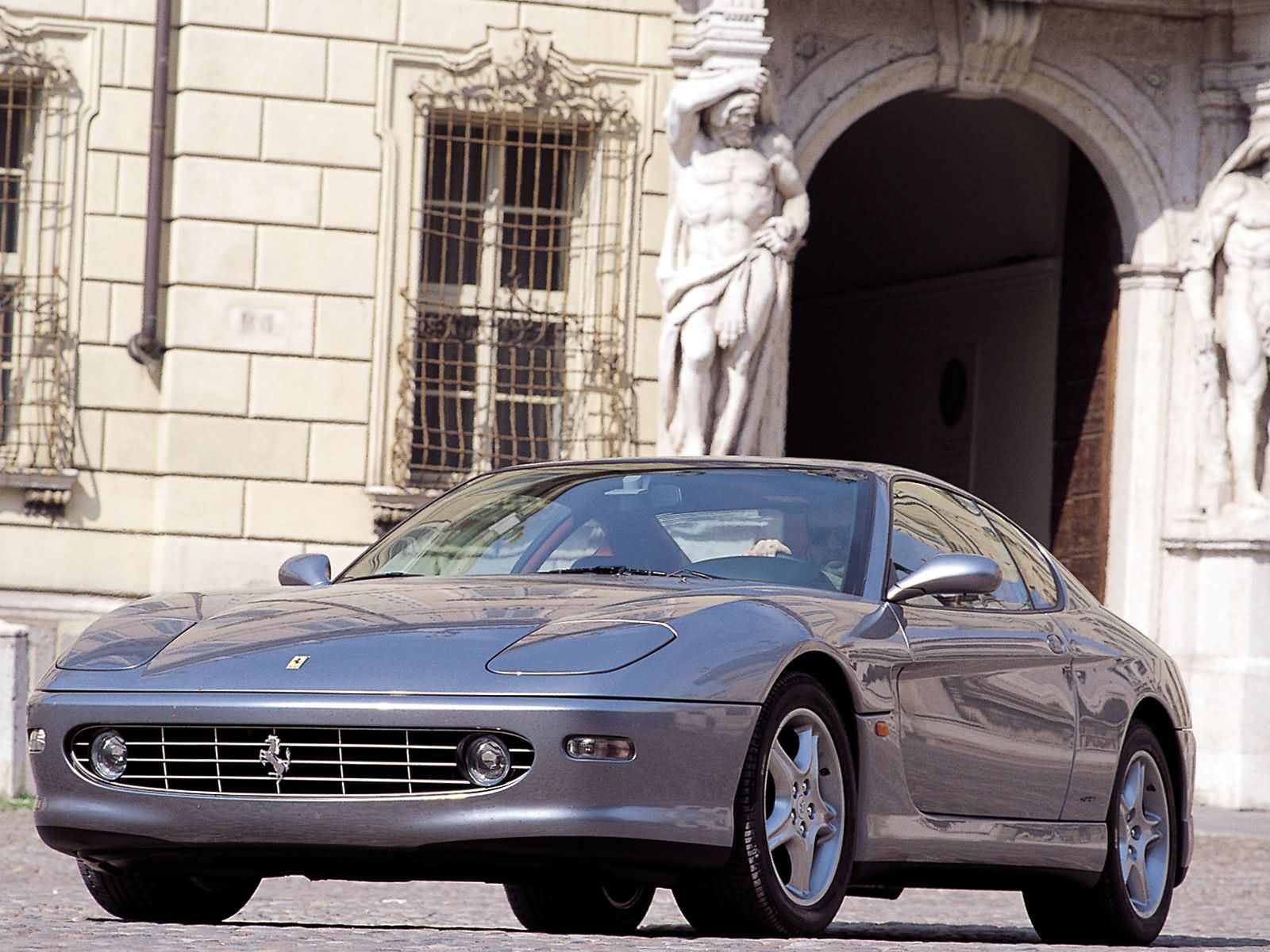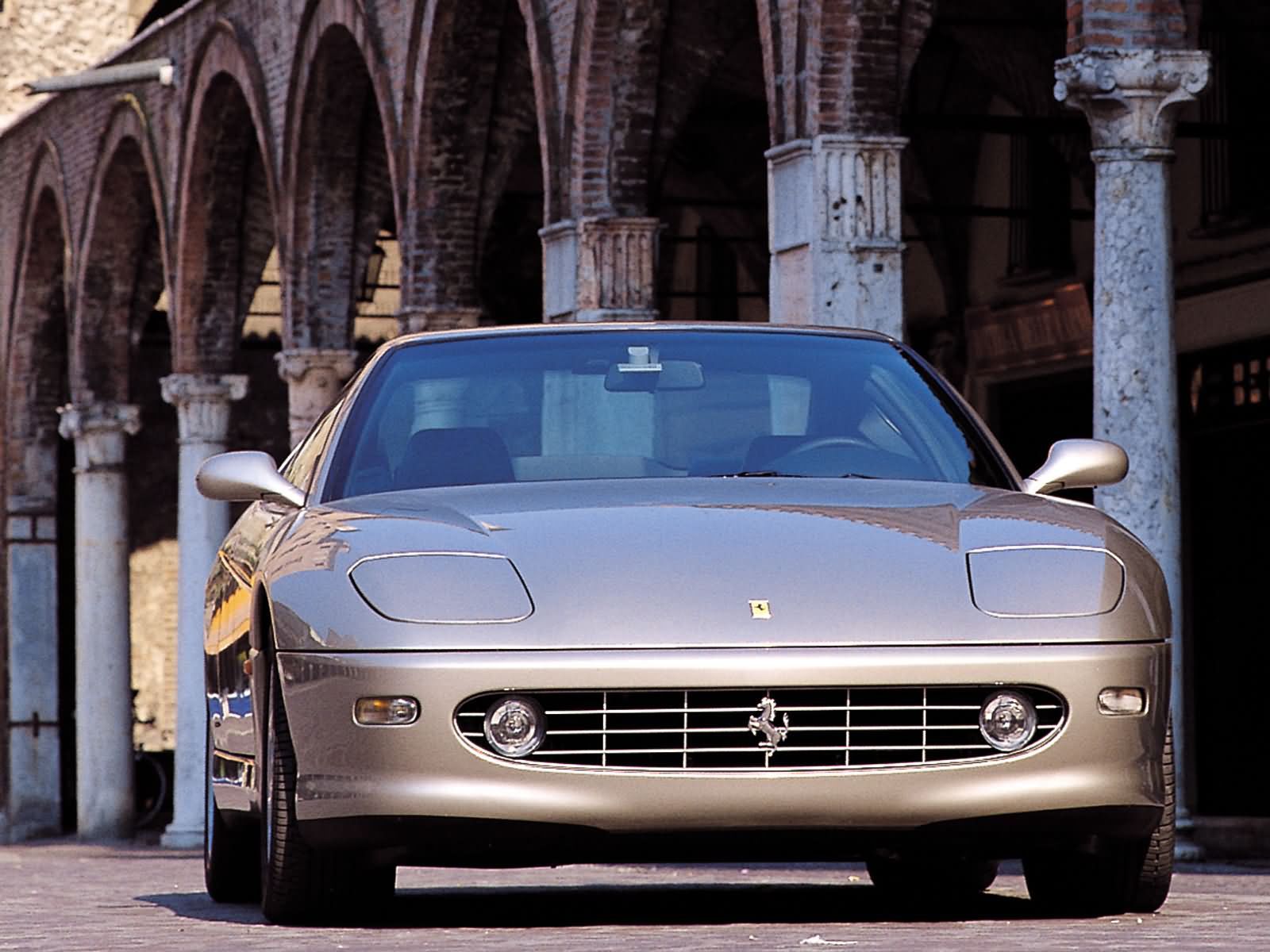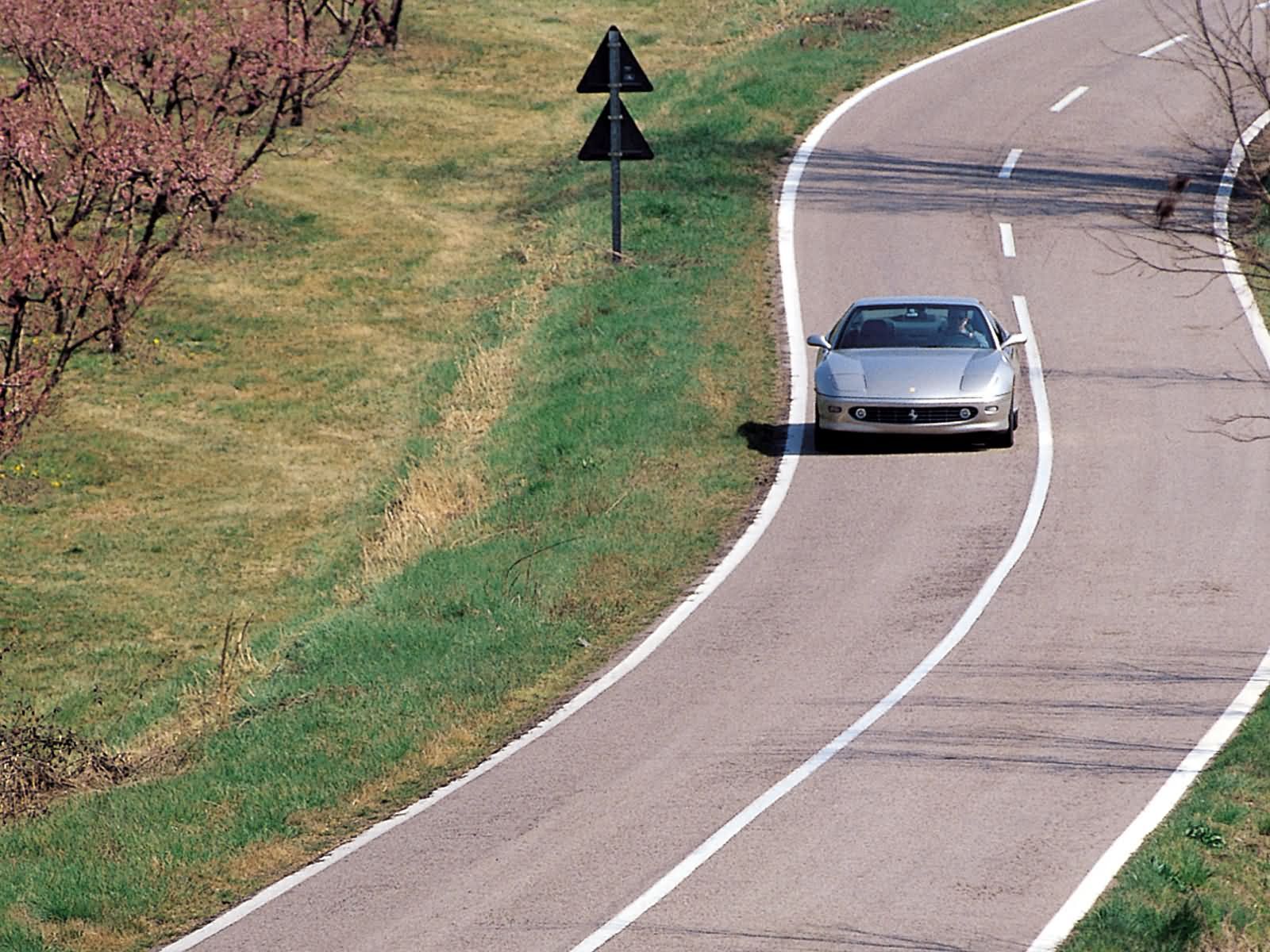The 456M (M for modified) GT represents the evolution of a Ferrari for those wanting four seats and diverse sporting ability. Though a Ferrari is a two-seater by birth, 2+2 versions have long represented an important tradition for the marque. 1948's Turin Show saw the Touring four-seat version of the "Barchetta" that won the 1949 Le Mans 24-hours, demonstrating the direct relationship between practical road car and state of the art sports racer. The 456M likewise represents the optimum balance of 12-cylinder performance with the comfort of a 2+2 GT Ferrari.
In 1966 '2+2' first appeared on a Ferrari: Pininfarina's 250GT. Since then, Pininfarina has risen to the challenge of designing every Ferrari 2+2. The quality of Pininfarina's original 456 styling was so fine that redesign would have been premature. Evolution was chosen to improve and refine mechanicals and aerodynamics while keeping the successful interpretation of a 2+2 with a V-12 coupled to a rear transaxle. The 456M GT enjoyed aerodynamic and thermal improvements, a more functional cockpit, improved space efficiency, and finer performance, ergonomics, and safety
1998 - 2003 Ferrari 456M GT
- Make: Array
- Model: 1998 - 2003 Ferrari 456M GT
- Engine/Motor: 3.5L V6
- Horsepower: 290@6200
- Torque: 5000
- Transmission: 5-Speed Automatic
- [do not use] Vehicle Model: Array
Design
The 456M embodies concepts that express the satisfaction of owning a Ferrari GT 2+2: excellent performance and driving pleasure, without sacrificing passenger comfort. The styling of the 456M considers this philosophy, matching the aggressive shape to supple lines. Special care was taken to enhance interior volume and ergonomics. The result is a complete synthesis of beauty, controlled aggression, and functionality. The 456M is the bench-mark for high-performance 2+2s.
Instantly recognizable as a Ferrari, the 456M has a less extreme shape than other cars in the current Ferrari range, yet it remains highly innovative and special. The 456M has a long, smooth carbon fibre bonnet, emphasized by the retractable headlights and two tension lines. Seen from above, the front aspect is more rounded than the previous 456, thanks to the redesigned bumper and integrated spoiler. The front turn-signals have been repositioned for improved visibility and the air intake with integral fog lights has a modified shape and size for improved engine and brake cooling. On the sides a new moulding for the windows runs along the door edge. At the rear is a revised bumper with stabilizer wing.
Structure
The 456M takes traditional Ferrari construction to the next level with modern materials, a first for the high-performance 2+2 genre. The 456M has an extremely rigid tubular steel chassis welded to a light aluminum body for structural integrity and rigidity. Because aluminum and steel cannot be welded directly together, a steel foil chemically treated with Feran is placed between the metals, allowing proper welds to be achieved. Light aluminum and sturdy steel are thus joined to provide a perfect platform for this super 2+2.
To further reduce weight while maintaining torsional rigidity, the 456M has a carbon fiber front hood. The side windows are flush with the door frames and feature an automatic device that perfectly controls window travel to achieve optimum sealing. The 456M is designed to feel both light and 'of a single piece', a remarkable achievement for a four-seat GT.
Drivetrain
The 456M engine is designed to get high power and torque at low and medium rotational speeds, from a smaller, lighter package. The V-12, 65 degree engine, with its 436 horsepower required no major modifications, but Ferrari engineers still improved its function for the purpose. The ignition order has been changed for smoother operation enhancing overall comfort. The new firing order is 1-7-5-11-3-9-6-12-2-8-4-10. The crankcase, heads and oil sump are in light alloy, with added aluminum liners.
Valve timing is controlled by four overhead camshafts. There are two intake and two exhaust valves per cylinder, arranged at a very sharp angle. The intake runners have a rectilinear form and the combustion chambers have a low surface-to-volume ratio for greater efficiency. The lubrication system has two scavenger pumps and one delivery pump, double filtration, and a radiator. A duct sprays oil directly on the underside of each piston for improved cooling.
A Bosch Motronic M5.2 system controls ignition and fuel delivery. Injection is multi-point, timed, and sequential, with bi-angular spray pattern and special throttle control. The fuel supply system includes two submersed pumps with compact filters. Ignition is static, with two six-outlet coils. The system includes a static stroke sensor and a toothed wheel on the engine flywheel.
The 456M GT manual transaxle is in the rear. The hydraulic clutch acts directly on the engine flywheel. Drive is transmitted to the gearbox through a three-bearing driveshaft housed in a steel pipe rigidly connecting the engine and gearbox. The six-speed-plus-reverse box has double-cone synchronizers with a low-friction, direct, sixth gear. The transmission is pressure lubricated with a pump and oil radiator. The gearbox control features the Ferrari standard aluminum gearshifter and polished aluminum gate. The differential is a ZF, fin-type, with limited slip and differentiated calibration.
Suspension
Like all Ferrari's, the 456M takes advantage of modern four wheel-independent suspension technology for optimal comfort and road-holding. The advanced geometry features cross quads and triangle arms, aluminum gas-operated shock absorbers with helical coaxial springs, and anti-roll bars front and rear. Shock absorber calibration control is electronic, and combines with a self-leveling rear suspension to maintain constant ground clearance under various loads.
The key improvements to driving precision, comfort, and especially more efficient damping on uneven roads in the 456M over previous models, come from new anti-dive front-suspension geometry, shock absorbers with special low-speed control, and front shock absorbers with a reduced coefficient of friction.
The suspension is electronically controlled by the driver through the use of a Normal and Sport switch that interacts with the ASR system. Depending on steering angle, speed, longitudinal and vertical acceleration, throttle opening, and brake circuit pressure, the system can control roll during acceleration and braking transitions. An ECU manages the calibration variation of each shock absorber via four motors.
The 456M braking system has been designed to offer deceleration commensurate with the car's other performance capabilities. The addition of a pneumatic brake booster has improved the 456M's system, especially at high speeds. The ultra-lightweight system includes four ventilated discs with aluminum calipers and 4-channel ABS, integrated with ASR and EBD (rear electronic braking corrector).
To improve performance and control even in extreme situations, the 456M has an ASR system fitted for dynamic stability control. The system optimizes the traction of the drive wheels, detecting possible skidding, through the combined action of the ABS and the engine control system. The driver can choose three levels of ASR through a dashboard switch - Normal, Sport (integrated with suspension control) and Off - ensuring almost complete control of the car's lateral and longitudinal dynamic and offering excellent safety.
The 456M's rack and pinion steering, is equipped with a Servotronic, condition-aware, speed-sensitive, power-steering device and retuned software, for more precise driving. The same steering force is required whether in a parking lot, on the highway, or on the track.
Interior
The 456M has a redesigned interior offering greater space efficiency. With attention to the sometimes antagonistic twins - functionality and performance, and comfort and elegance - the interior space was redefined and rationalized. A primary problem in 4-seat coupes is access to the rear seats. The automatic forward travel of the 456M's self-repositioning front seats has been increased, providing rear-seat passengers with all necessary space. The front seats are partly constructed from a special, new foam rubber and have nine-way electronic adjustments with position memory. The capacity and comfort of the rear seats have been improved through a clever redesign.
Improving usability, the instrument panel has been fully redesigned to better define each display. The classically styled instruments reside behind the steering-wheel, and offer the most important information: engine speed, road speed, and distance traveled. Smaller analog displays for water temperature and oil pressure flank the central multi-function display for operational and emergency information. Ancillary instruments are fully visible above the console.
Central to the driver is the new, lighter, three-spoke steering wheel and the gearbox lever, which is now more ergonomic with a larger operating clearance between it and the gate. Document pockets behind the front seats, the new transmission tunnel, and the new rear parcel shelf offer greater interior storage, and special care has been paid to inner sound-deadening for comfort. The climate control system has an integrated sun radiation sensor and new software for temperature control.

